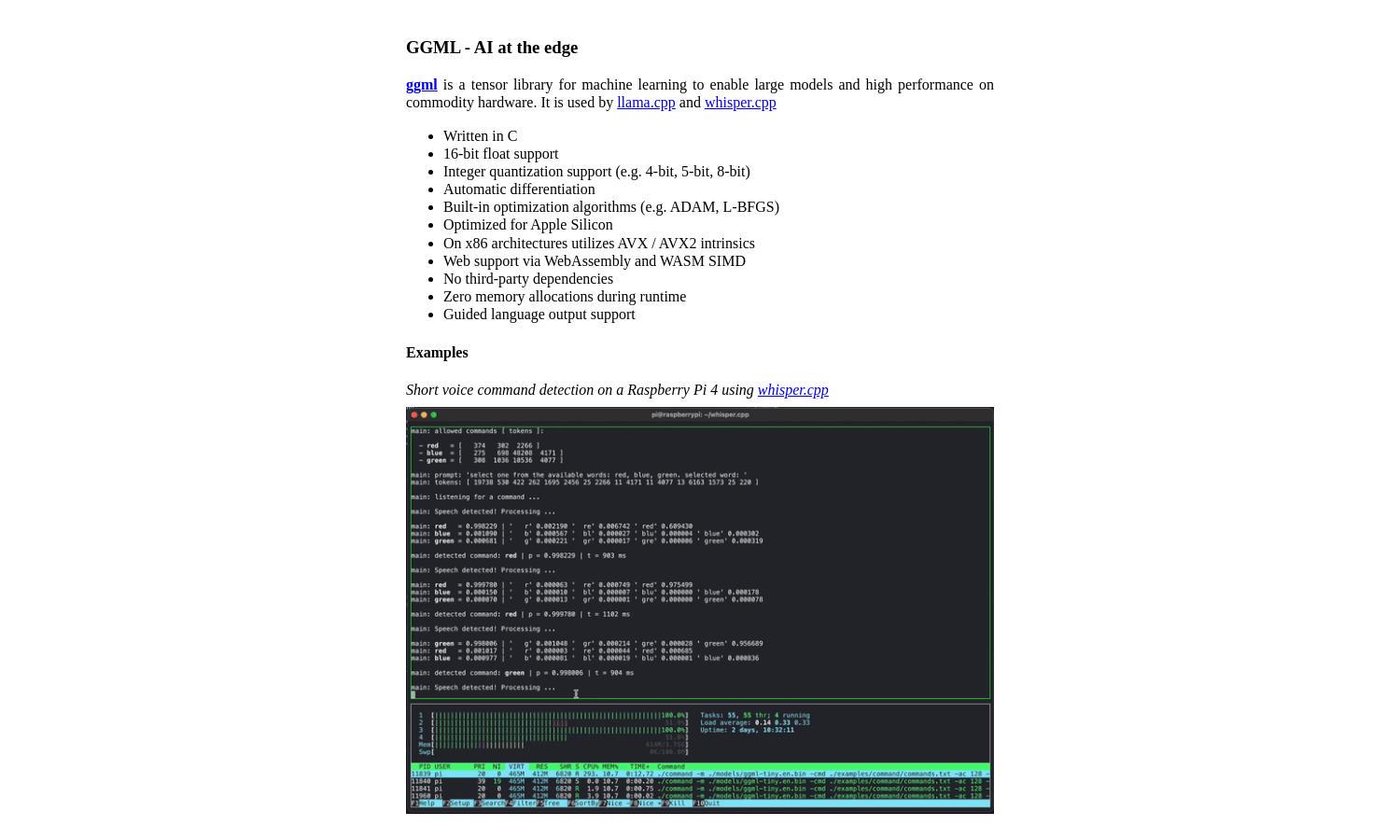ggml.ai

About ggml.ai
ggml.ai is a powerful tensor library enabling high-performance machine learning on standard hardware. Designed for innovators and developers, ggml.ai supports projects like llama.cpp and whisper.cpp, providing essential tools such as automatic differentiation and quantization, facilitating rapid development and deployment of AI solutions.
ggml.ai currently offers open-source access under the MIT license, encouraging contributions from the community. While there are no specified subscription tiers, potential future extensions may be commercially licensed, providing opportunities for commercial use and enhanced features tailored for businesses seeking advanced machine learning capabilities.
The interface of ggml.ai is designed for simplicity and ease of use, allowing developers to navigate seamlessly through various features. Its minimalistic layout ensures a user-friendly experience, empowering users to focus on innovative tensor operations without unnecessary distractions while exploring the capabilities of ggml.ai.
How ggml.ai works
Users start by accessing ggml.ai’s documentation and resources to understand its core functionalities. Upon onboarding, developers can easily navigate the intuitive interface to implement tensor operations, leverage automatic differentiation, and utilize quantization techniques. ggml.ai simplifies machine learning deployment, making it accessible for all skill levels.
Key Features for ggml.ai
High-Performance Inference
The high-performance inference capability of ggml.ai allows developers to run advanced machine learning models efficiently. This unique feature caters to a wide range of hardware platforms, enhancing accessibility for various applications and ensuring that users can leverage powerful AI tools without extensive resources.
Cross-Platform Compatibility
ggml.ai's cross-platform compatibility ensures that users can deploy machine learning models seamlessly across different operating systems. This flexibility enhances user experience, enabling developers to work on Mac, Windows, Linux, and more, making ggml.ai a versatile solution for diverse project requirements.
Automatic Differentiation
Automatic differentiation is a standout feature of ggml.ai, allowing developers to calculate gradients efficiently for training machine learning models. This capability enhances the library's functionality, making it easier for users to optimize models and improve performance, streamlining the development process in AI projects.








